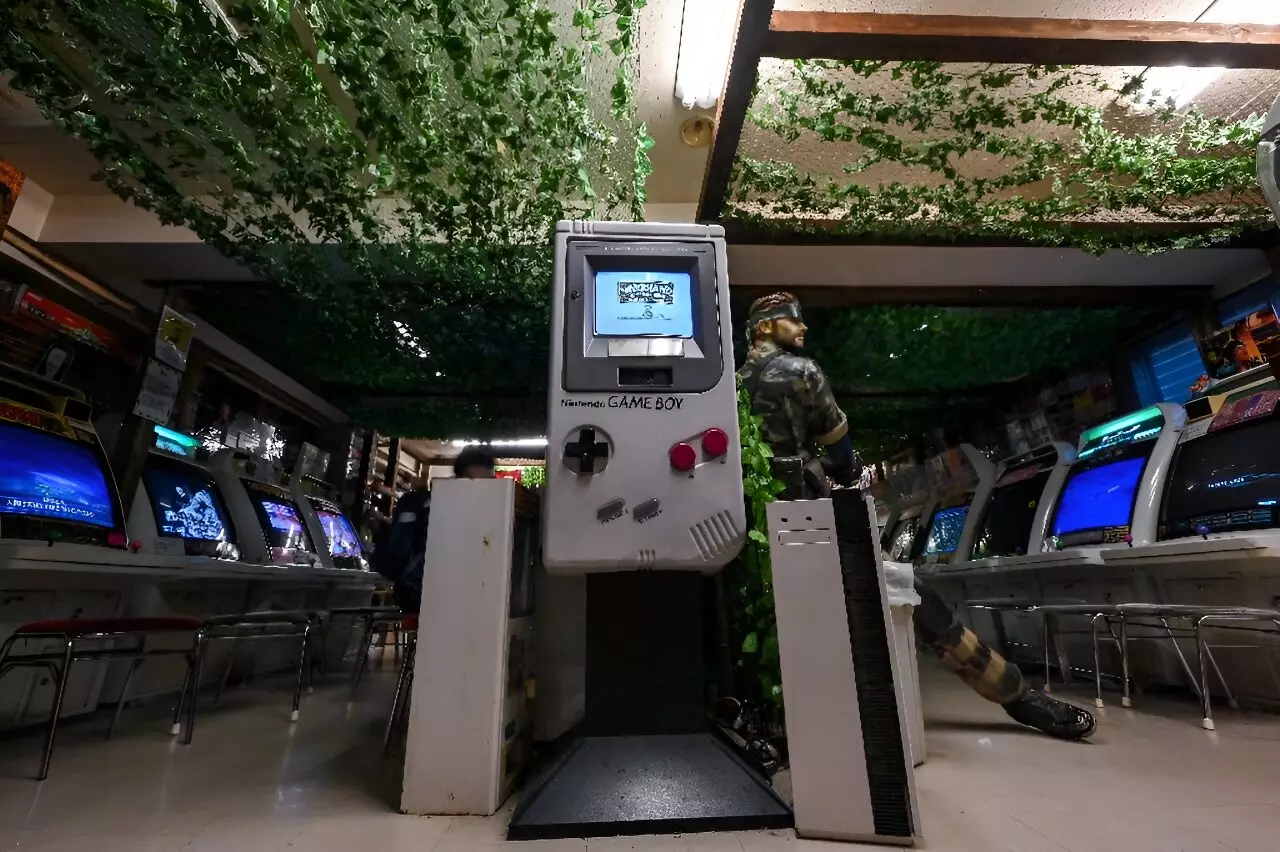In the bustling alleys of Tokyo’s Akihabara district, something remarkable is happening—an awakening of nostalgia in the form of retro gaming. Tourists flock to stores like Super Potato, where the atmosphere is charged with the excitement of rediscovery. One such visitor, 23-year-old David Madrigal from the US, exemplifies the enchantment that these classic gaming consoles can evoke. His recent purchase of a PlayStation Vita—a console that cost him merely $200 in Japan, a stark contrast to the $600 he would have paid back home—highlights the tantalizing discrepancies that attract enthusiasts. For many, these older consoles represent not just gaming devices but relics from a more inventive era of video games, full of unique experiences that seem all but lost in today’s market.
As Madrigal walks through the store, he describes his experience as akin to a child in a candy shop, surrounded by vintage consoles and games that shaped his childhood. Indeed, the shelves of Super Potato tell a story of gaming history, showcasing iconic devices like the Sega Dreamcast and an assortment of obscure Game Boy cartridges. The unique character of Japanese gaming culture adds to the appeal, with retro items sometimes fetching astonishing prices. The handheld Nintendo Game & Watch game—which features the legendary “Zelda”—is listed at a staggering 250,800 yen ($1,750), demonstrating the depth of demand for these relics.
The influx of foreign tourists—70 to 80 percent of the store’s clientele, as noted by store manager Komura—has coincided with a surge in nostalgic yearning. It seems that many modern games lack the innovation of their predecessors, with repetitive gameplay overshadowing the creativity that once defined the industry. Madrigal, echoing this sentiment, laments the loss of risk-taking among game developers, emphasizing that the games of his youth presented fresh challenges that ignited imaginations worldwide.
The phenomenon of retro gaming transcends mere enjoyment and taps into a burgeoning collector’s market driven by appreciation for cultural history. Hiroyuki Maeda, a video game historian, illustrates how the allure of these vintage consoles is amplified by their varied international branding and unique designs. The distinct experiences of consoles such as Nintendo’s Famicom and Super Famicom—each marketed differently overseas—add a layer of excitement for collectors hunting for pieces that evoke personal meaning. Maeda’s assertion that encountering an unfamiliar yet nostalgic device stimulates the “collector’s soul” encapsulates the magnetic pull these items have on enthusiasts.
Proudro, a dedicated collector residing in rural Japan, embodies the spirit of this resurgence. His collection—housing thousands of vintage games and fully functioning arcade machines—was amassed through years of pursuits at local shops and markets, often spurred by the longing for nostalgia. Interestingly, despite his extensive collection, Proudro admits he rarely plays games. Instead, he takes joy in the ambiance they create—the sounds and memories enveloping him in the aura of his childhood.
Historically, the value of retro games was grossly undervalued, with many items sold for mere cents in bins at local shops. This reality offers context to the current landscape, where a pristine copy of “Super Mario Bros.” sold for an astounding $2 million in 2021. Proudro’s journey as a collector tells a tale of gradual appreciation, as he recalls a time when owners of quaint toy shops in Japan were eager to part with their dusty stock for mere crates of vegetables.
Today, however, the rapid advancement of technology and the internet has transformed the market entirely. Collectors now face challenges unheard of in previous decades, with a notable decline in local shops where treasures could be uncovered. This shift has inadvertently increased prices, as enthusiasts explore online avenues to obtain their sought-after items. Amid these changes, Proudro expresses a yearning for the Japanese gaming culture to remain rooted domestically, much like traditional Japanese woodblock prints that once found value abroad but have struggled to gain recognition at home.
As the global community continues to engage with Japan’s unique retro gaming offerings, the dynamic landscape of this niche market only grows richer. Amid the challenges posed by modernization and the internet, the memories embodied in these vintage consoles persist, igniting passion in collectors and visitors alike. In celebrating their heritage and embracing nostalgia, Japan cultivates a profound connection to its past—a realization that resonates deeply with individuals like Madrigal and Proudro, who continue to bridge the gap between yesterday’s adventures and today’s experiences.


Leave a Reply